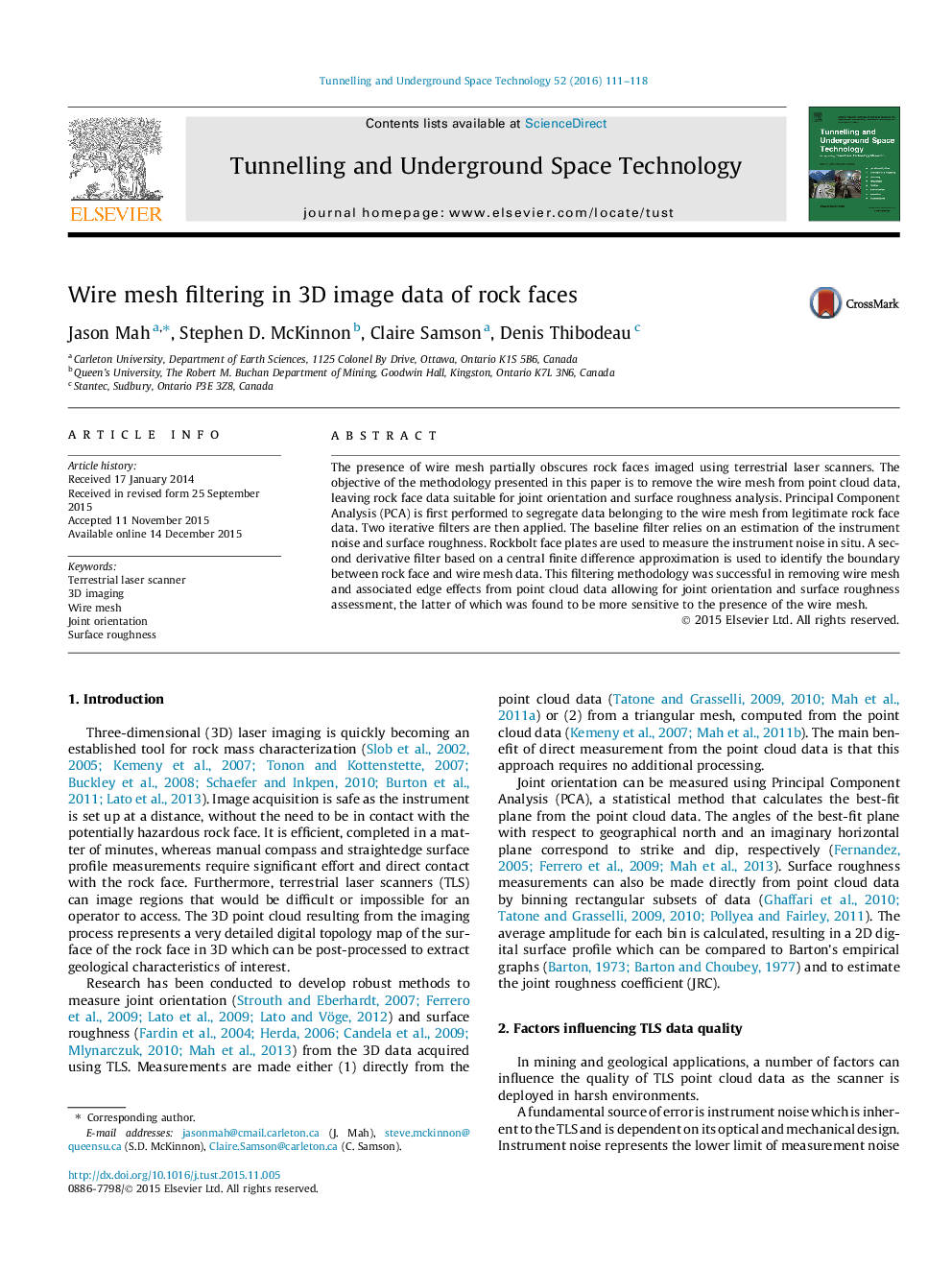| Article ID | Journal | Published Year | Pages | File Type |
|---|---|---|---|---|
| 312195 | Tunnelling and Underground Space Technology | 2016 | 8 Pages |
•The presence of wire mesh creates shadows and edge effects in 3D point cloud data.•Wire mesh is removed allowing joint orientation and surface roughness measurement.•Wire mesh is identified and removed using 2 iterative filters.•Instrument noise measured in situ using rockbolt faceplates for outlier rejection.•Surface roughness is more sensitive to wire mesh than joint orientation.
The presence of wire mesh partially obscures rock faces imaged using terrestrial laser scanners. The objective of the methodology presented in this paper is to remove the wire mesh from point cloud data, leaving rock face data suitable for joint orientation and surface roughness analysis. Principal Component Analysis (PCA) is first performed to segregate data belonging to the wire mesh from legitimate rock face data. Two iterative filters are then applied. The baseline filter relies on an estimation of the instrument noise and surface roughness. Rockbolt face plates are used to measure the instrument noise in situ. A second derivative filter based on a central finite difference approximation is used to identify the boundary between rock face and wire mesh data. This filtering methodology was successful in removing wire mesh and associated edge effects from point cloud data allowing for joint orientation and surface roughness assessment, the latter of which was found to be more sensitive to the presence of the wire mesh.
Graphical abstractFigure optionsDownload full-size imageDownload as PowerPoint slide
